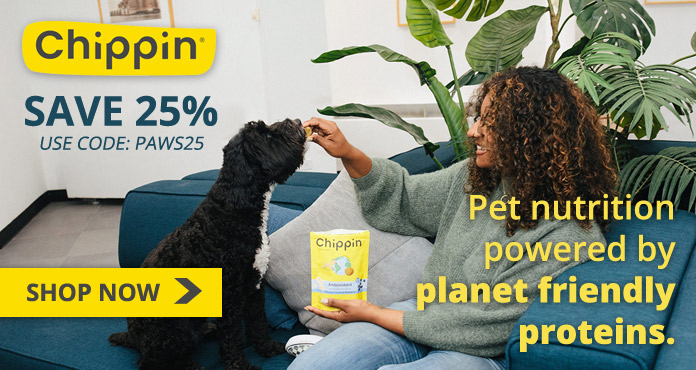How your pet’s diet impacts the environment

A look at how your dog or cat’s food impacts the environment, and what factors to consider when investing in an eco-friendly brand!
Did you know that it takes 2,000 gallons of water to produce one pound of beef protein? Compare that to the one gallon of water it takes to produce a pound of cricket protein, and you’ve got an obvious winner when it comes to eco-friendliness! Many of us are considering are environmental impact when it comes to the food we eat, but our pets’ diets are equally important! Here’s how his food is making an impact, and what companies should be doing to reduce their customers’ carbon pawprints.
1. Greenhouse gases
The production of traditional pet food is resource-intensive and produces 64 million tons of greenhouse gases per year. To help reduce this number, consider switching your pet to a brand of food that takes this into account in their manufacturing process. “We partner with eco-friendly family farms right here in the USA that commit to producing premium and humanely harvested protein,” says Haley Russell, Co-founder and CEO at Chippin.
2. Resources
The fewer resources that are used in the production cycle of a pet food, the better it is for the environment. As mentioned above, it takes a lot more water to produce a pound of beef than the same amount of cricket protein – and the same applies to land. It goes without saying that a lot less space is required to raise crickets than larger animals like cows and poultry.
“But doesn’t my dog need meat?”
The short answer is “no”! All dogs have certain protein requirements, but as long as those needs are met through diet, the protein they consume doesn’t have to come from meat. “All Chippin products contain no proteins or by-products from mammals,” says Haley. “The crickets and silver carp fish we source are humanely harvested from our small to medium-sized farmer and fishery partners. Our crickets are harvested at the end of their natural life cycle and live in conditions that they would naturally select. Our silver carp is wild-caught, and by fishing for this overpopulated fish we help restore biodiversity, improve water quality, and protect the Great Lakes.”
3. Packaging
How a pet food is packaged is another factor to consider when shopping for an eco-friendly diet for your dog or cat. Ideally, packaging should be made (at least in part) from post-consumer recycled (PCR) materials, which helps decrease the amount of plastic pollution that ends up in landfills, waterways and – wait for it – drinking water. Aside from contacting a company directly to ask, the easiest way to identify PCR packaging is to inspect it yourself! “If you look closely you can see little bumps that are not in “virgin” plastic packaging,” says Haley. “Also, it may crinkle/wrinkle more than standard food pouches; that’s a good thing!”
4. Shipping
If they want to call themselves “green”, companies should be considering whether or not their shipping practices are carbon neutral. This term refers to the practice of offsetting carbon emissions through other efforts, such as funding forest conservation and restoration projects. You can contact companies to ask about these efforts, as well as their shipping practices. Are they regularly evaluating how they can shorten routes and idle time to reduce fuel consumption?
Chippin has found a way to prioritize the environment and the health of pets – and by choosing their food for your fur babe, you’re “chipping in” to support this mission! To learn more, visit chippinpet.com.





